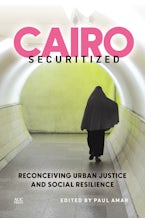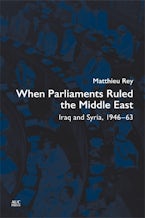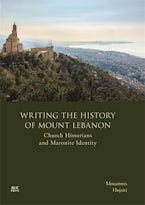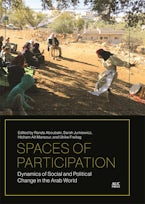- Home
- Middle East Urban Studies
- Open Gaza

Open Gaza
Architectures of Hope
Edited by Michael Sorkin and Deen Sharp
Preface by Sara Roy
With Terreform
Series edited by Deen Sharp and Noura Wahby
Series: Middle East Urban Studies
348 Pages, 8.00 x 11.00 in, 176 color and b/w images
- Hardback
- 9781649030719
- March 2021
- Region: US & Canada, UK, Europe & Rest of World
$70.00
£60.00
- 9781649030733
- December 2020
- Region: Worldwide
$69.99
Where To Buy:
Cutting-edge analysis on how to improve life inside the Gaza Strip through architecture and design, illustrated in full-color
The Gaza Strip is one of the most beleaguered environments on earth. Crammed into a space of 139 square miles (360 square kilometers), 1.8 million people live under an Israeli siege, enforcing conditions that continue to plummet to ever more unimaginable depths of degradation and despair. Gaza, however, is more than an endless encyclopedia of depressing statistics. It is also a place of fortitude, resistance, and imagination; a context in which inhabitants go to remarkable lengths to create the ordinary conditions of the everyday and to reject their exceptional status. Inspired by Gaza’s inhabitants, this book builds on the positive capabilities of Gazans. It brings together environmentalists, planners, activists, and scholars from Palestine and Israel, the US, the UK, India, and elsewhere to create hopeful interventions that imagine a better place for Gazans and Palestinians. Open Gaza engages the Gaza Strip within and beyond the logics of siege and warfare, it considers how life can be improved inside the limitations imposed by the Israeli blockade, and outside the idiocy of violence and warfare.
Contributors Affiliations
Salem Al Qudwa, Harvard Divinity School and Harvard Kennedy School, Cambridge, USA
Hadeel Assali, Columbia University, USA
Tareq Baconi, International Crisis Group, Brussels, Belgium
Teddy Cruz, University of California-San Diego, USA
Fonna Forman, University of California-San Diego, USA
M. Christine Boyer, Princeton University, Princeton, USA
Alberto Foyo, architect, New York, USA
Nasser Golzari , Westminster University, London, UK
Yara Sharif, Westminster University, London, UK
Denise Hoffman Brandt, City College of New York, USA
Romi Khosla, architect, New Delhi, India
Craig Konyk, Kean University, Union, NJ, USA
Rafi Segal, Massachusetts Institute of Technology, Boston, USA
Chris Mackey, Payette Architects, Boston, USA
Vyjayanthi V. Rao, Terreform, New York, USA
Sara Roy, Harvard University, Cambridge, USA
Mahdi Sabbagh, architect, New York, USA
Meghan McAllister, architect, San Francisco Bay Area, USA
Deen Sharp, London School of Economics, UK
Malkit Shoshan, Harvard University, Cambridge, USA
Pietro Stefanini, University of Edinburgh, Scotland
Michael Sorkin (1948–2020) , City University of New York, USA
Helga Tawil-Souri, New York University, USA
Omar Yousef, Al-Quds University, Jerusalem
Fadi Shayya, The University of Manchester, UK
CONTENTS
PREFACE Sara Roy
INTRODUCTION Terreform
GAZA’S SKIN Tareq Baconi
ARCHITECTURE OF THE EVERYDAY Salem Al Qudwa
RING CITY: A METROPOLIS —NOT AN ENCLAVE Terreform
FOUR TUNNELS Bint al-Sirhid
THE QATAN CENTER FOR CHILDREN Omar Yousef
TIMELESS GAZA Mahdi Sabbagh and Meghan McAllister
ABSURD-CITY, SUBVERT-CITY Yara Sharif and Nasser Golzari
120 PLANNING RUINATION M. Christine Boyer
RE-ECOLOGIZING GAZA Fadi Shayya and Visualizing Palestine
THE INTERNET PIGEON NETWORK Helga Tawil-Souri
COLLECTIVE EQUIPMENT Royal College of Art, ADS7
FRONTIER URBANIZATION Francesco Sebregondi
NORMALIZING THE SIEGE: THE GAZA RECONSTRUCTION MECHANISM (GRM) Pietro Stefanini
CITY OF CRYSTAL Craig Konyk
NATURAL GAZA Romi Khosla
ZOO, OR THE LETTER Z, JUST AFTER ZIONISM Malkit Shoshan
SOLAR DOME Chris Mackey and Rafi Segal
SOCIAL HYDROLOGY: A DESIGN RESISTANCE Denise Hoffman Brandt
REDRAWING GAZA Alberto Foyo and Postopia
INTERDEPENDENCE AS A POLITICAL TOOL Teddy Cruz and Fonna Forman
HYPERPRESENT ABSENCE: SUGGESTED METHODS Hadeel Assali
TIMELINE Terreform
CONTRIBUTORS
Michael Sorkin (Edited by, 1948–2020) was the founder and president of Terreform. Sorkin was an architect whose practice crossed design, criticism, and pedagogy. He is the author or editor for over twenty books, including The Next Jerusalem: Sharing the Divided City (Monacelli, 2002) and Against the Wall: Israel’s Barrier to Peace (The New Press, 2005). In 2000, he was appointed the Distinguished Professor of Architecture and Director of the Graduate Program in Urban Design at the City College of New York, CUNY, and in 2014 he was made an honorary member of the Architectural Association in London.
Deen Sharp (Edited by), PhD Graduate Center, CUNY, is the co-director of Terreform, Center for Advanced Urban Research and a visiting fellow in human geography at the London School of Economics. He was previously a post-doctoral fellow at the Aga Khan Program for Islamic Architecture at the Massachusetts Institute of Technology (MIT). He is the co-editor of Beyond the Square: Urbanism and the Arab Uprisings (Urban Research, 2016) and has published in a number of scholarly journals, edited books, and e-zines.
Sara Roy (Preface by) is a senior research scholar at the Center for Middle Eastern Studies, Harvard University. She has published extensively on the Israeli –Palestinian conflict, with a focus on Gaza. She formulated the concept of “de-development” to explain the impact of Israeli policy on Gaza’s economy. Her major work, The Gaza Strip: the Political Economy of De-development, is now in its third edition (2016). Previously she authored Hamas and Civil Society in Gaza: Engaging the Islamist Social Sector (2011).
"A dazzling book"—Booklist (starred review)
"A work of radical imaginaries . . . offer[s] mind-bending insights"—Middle East Journal
“[This] book is exceptional” —Yes! Magazine
“Open Gaza, which brings together environmentalists, planners, and scholars from Israel, Gaza, the West Bank, the U.S., the UK, India and beyond to share their visions for creating a better place for Gazans and Palestinians.”—Robin Young, NPR’s Here and Now
"The book’s essays explore the extant condition of Gaza and its wider socio-political context, and offer speculative designs aimed at wresting back sovereignty and dignity for its residents. It posits that the ad-hoc, low-carbon design techniques that Gazans have developed look ahead to a planet failing to meet the challenges of a climate cataclysm, a global pandemic, and growing inequality."—Bloomberg CityLab
"The Gaza of this handsome book is one that transcends the excesses of occupation via imagination and innovation, resilience, and ultimately courage. Open Gaza is a book that dares to subvert the tired old narratives of despair and gives agency to Gaza’s 1.8 million inhabitants via the magic of architectural intervention. And yet . . . the book does not ignore the brutal realities of occupation, but rather, in suggesting solutions both in spite of it and for a hoped-for post-occupation future, underlines them. "—The Markaz Review
"An impressive, substantial collection"—Shelf Awareness
"Oscillating between the poetic and the academic, the historical and the current, Open Gaza promises to be more than just another installment of armchair solutionism for the oft-discussed but rarely aided Strip."— Metropolis
"The book is successful in presenting the reality of Gaza beyond many mainstream representations on this subject."—Contemporary Levant
"Gazan architect Salem al Qudwa, a fellow in conflict and peace at the Harvard Divinity School, and contributor to a new book called Open Gaza: Architectures of Hope, has developed a green, flexible, and affordable model for self-built homes in Gaza. They are designed to be constructed on sand and rubble, and can create a 'nurturing and safe environment for women and children, and to empower communities.'"—Architectural Digest
"Searching for ways that fortitude, resistance, and imagination can work in an area characterized by unimaginable despair and degradation is the driving logic of this book. . . .Open Gaza is an urgent plea for humanitarianism and imaginative, critical involvement, needs that become more pronounced with each passing day . . . Highly recommended."—CHOICE
“By bringing together multiple contributors from different disciplines and specialists engaged in different spatial and environmental practices, Open Gaza counters [an] increasingly sophisticated architecture of brutality with an architecture of hope inspired by the Gaza population’s will to live and remain connected to the world.” —International Journal of Middle East Studies
"[T]he authors grapple with the physical siege and geopolitical preconceptions of Gaza, countermapping their way to novel architectural thinking, discourse, and pedagogy. In these collected works, professionals take civil responsibility for the horrors and injustice of the world, reframing students’ studio work as part of a radical pedagogical experiment."—Journal of Palestine Studies
“This remarkable collective volume, Open Gaza, includes architectural contributions that imagine a better future, touching accounts of the tragic present, and historical and ethnographic portraits that together enable us to see the community of 2 million people living in the Gaza Strip as they really are and could be, and not as they have been made out to be by the incessant campaign of dehumanization to which they have been subjected. Capacious and enlightening, Open Gaza is a credit to its many authors, and fitting monument to one of its editors, the late Michael Sorkin.” —Rashid Khalidi, author of The Hundred Years’ War on Palestine: A History of Settler Colonialism and Resistance, 1917-2017
“Rather than rehearse the statistics and calamities that have marked the abundant coastal enclave for social death, Open Gaza provocatively shows how Gaza continues to be a source of life in its ingenuity, love, and possibilities. Simultaneously, it makes clear that current conditions in Gaza are not inevitable but have been constructed, reproduced, and justified by lawmakers indentured by a political present. From a journey through a network of tunnels, an alternative digital grid, agriculture zones, transportation routes that rehabilitate a fragmented Arab world, this collection of essays is a powerful retort to the tired discourse that has framed Gaza’s future as a security question contingent upon demilitarization and containment. Open Gaza is an exciting invitation into new futures that Gaza and Palestine, more generally, offer for Palestinians and the world.” —Noura Erakat, author of Justice for Some: Law and the Question of Palestine
“Twenty years ago, I was part of a group of architects, historians, and activists asked to think about Jerusalem as a single, undivided city. Led by Michael Sorkin, we toured the area and formed a community of practice still operating today in opposition to Israel’s occupation. The results were collated in The Next Jerusalem, and some of its contributors reappear in this volume. In Open Gaza, they are joined by a new generation of practitioners and scholars, who continue this most vital investigation and struggle against the continued Gaza’s continued imprisonment. Their work—both critical and visionary—forms a seed that might one day sprout and bloom when this cruelly dominated and repressed place is free to find its own future.” —Eyal Weizman, founding director of Forensic Architecture
“Open Gaza provides an essential contribution to the study of modern Palestine and the greater Mediterranean Basin. The collection succeeds in providing a balance between works that highlight the dismal, wanton destruction of Palestinian lives and those that are underpinned fundamentally by an optimistic, constructive vision of the future. At its heart is a commitment to transforming shared urban spaces into something that materially reflects the boundlessness of Palestinian spirits. The imaginative collection addresses many of the practical questions posed by urban planning. Yet most usefully, these essays cast Gaza as a constituent urban space, interactive with the sites and cities around it. This frame permits the reader to imagine a future that breaks from our present-day reality of ‘containers,’ siege, borders and tunnels.” —Ahmed Moor, CEO of Liwwa, Inc.
"Gaza’s capabilities are real and its potential realizable. In the practical and energizing ideas found in this volume, Gaza’s well-being—and that of the region as a whole—lies in inclusion and in the promise that such inclusion embodies, which, as is argued, is truly worth pursuing."—Sara Roy, author of The Gaza Strip: the Political Economy of De-development











